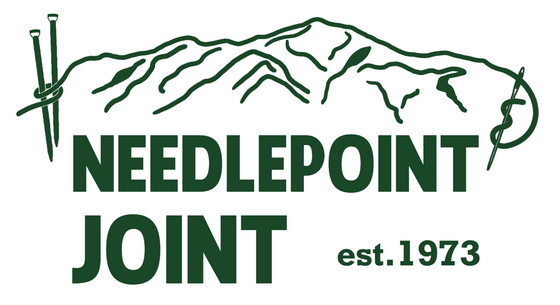Knitting Needle Information
We carry a range of knitting needles that balance preferences in price, quality, join smoothness and tip pointy-ness. The staff at Needlepoint Joint have a variety of preferences depending on different knitting styles, types yarn used and type of project. Note that while each needle may perform differently, each is recommended. We carry only the brands we feel are excellent quality. Having good needles definitely enhances the knitting experience. You will probably have to experiment to find the needles that are for you.
Here are some of our observations about the different needles.Bamboo
The Addi bamboo needles are make with hardy bamboo and good points. Similar to wooden needles, they are not indestructible. The smaller sizes are somewhat strong, but can be bent or even broken if not carefully used. The larger sizes are lightweight and more easily manipulated than metal needles. If you get a snag on the needle, use an emery board to sand it.
Birch
The Knitter’s Pride Symphonie Dreams are made of densified laminated birch wood. While we cannot explain this process, the result is a wooden type needle that is strong with good points. They tend to wear well. Like all wooden needles, the smaller sizes are somewhat strong, but can be bent or even broken if not handled correctly.
Brass
The Addi Lace needles have an aggressively tapered point for the demands of lace knitting. Unlike the other Addi metal needles, these are an unfinished brass finish that is slower than the nickel finish of the Rockets and Turbos. These have a little more “friction” while you knit that keeps stitches from flying off the needle.
Carbon Fiber
The Knitter’s Pride Karbonz are needles that utilize the high tensile strength and lightweight qualities of carbon fiber. The tips are electroplated brass. The transition join between the carbon fiber and the brass tips is very smooth and does not catch on your yarn. Overall, they create a smooth knitting experience
Nickel Plated
The Addi Turbo, Addi Sock Rockets and Addi Rockets are made of hollow brass and then nickel coated for a smooth, sleek finish. The slick nature of the coating is made to allow for lightning fast knitting. The Rocket needles have the same aggressively narrowed points as the Addi Lace needles, the Turbo needle has a blunter tip.
Single Points
A pair of needles, each pointed on one end, for back and forth knitting. Sometimes these are called straight needles. They have a knob, of some shape or another, on one end to keep the stitches from falling off. Shorter ones are often easier to manipulate for small projects such as baby sweaters. Knitters who tuck the end of a needle under an arm prefer long single points.
Double Points
Needles with points on both ends, these are the oldest form of knitting needle known. They allow for circular knitting even when the diameter of the resultant “tube” is very small. They come in sets of 4 or sets of 5. Some knitters put stitches on 3 needles (forming a triangle) and knit with the fourth. Others put stitches on 4 needles (forming a square) and knit with the fifth. The shortest double points are sometimes called glove needles.
Circular
Needles for circular knitting, although they can be used for back and forth knitting as well. They have points in the desired size long enough to accommodate your hand. The points are joined by a thin nylon cord. They come in different lengths measured from the tip of one needle to the tip of the other. Note that the length of the needle is usually short if a circular needle is 16” or shorter. For this reason, many people prefer to knit on a 24" needle or longer unless they are knitting a small diameter project.
Lace Needles
These are very small double pointed needles, usually below a size 0, and are used for knitting lace with crochet threads or very fine wool.
Sizing
There is no standard sizing in the knitting needle industry. The two main sizing methods used on needle packaging are United States (US) sizing and European metric (mm) sizes. European patterns usually call for metric sizes. The metric sizing makes a lot of sense because it is based on a millimeter measurement of the diameter of the needle. We've included charts to guide you in ordering. Most manufacturers have their own version of sizing, so an Addi US 3 may not match a Knitter’s Pride US 3. Also, some brands are not made in every US size. Your best insurance, for a properly sized project, is to knit a gauge swatch.
